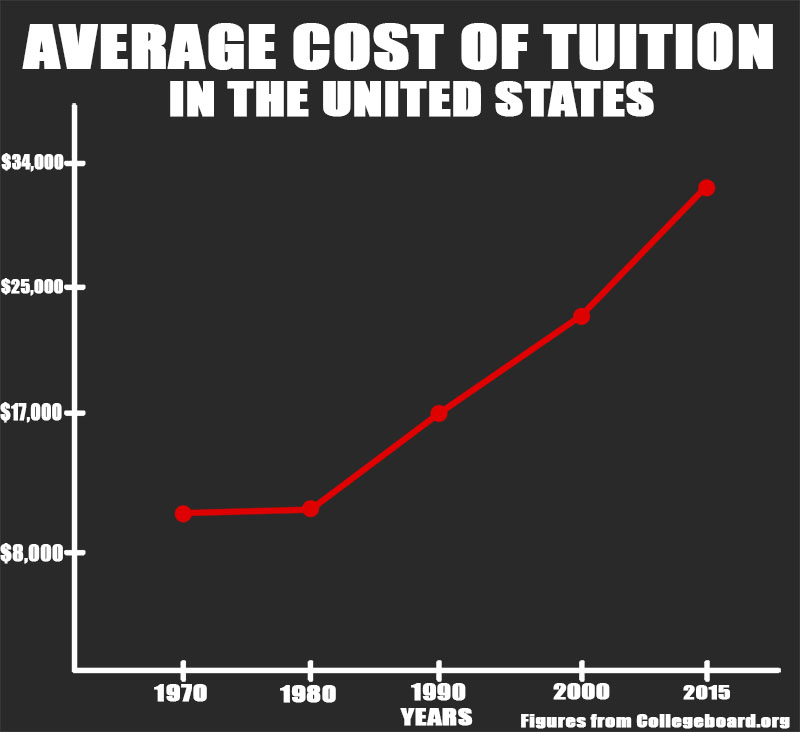Students Need to Learn More About Paying for College, Alternate Options
November 28, 2018
University tuition in 2018 is at an all-time high and the amount of debt students now face once graduating college is crippling. There was a time when students managed debt from student loans because they were likely to be hired into a well-paying job in a robust job market. Times have changed.
Student debt has hit a staggering $1.5 trillion and the average amount borrowed per student is $37,172, according to a June 13 Forbes article. Since 1980, the cost of public tuition has risen 213 percent and private tuition is not far behind at 129 percent. For some students, it seems that the cost is outweighing the benefit.
Students should be made aware of the dangers of tuition costs in high school and be presented with clear, viable plans to take alternate paths to a career.
College is still viewed as the logical next step after high school because, for a long time, college was an almost guaranteed ticket to success. Since many people could not afford to go, the government started giving out loans which would be paid back in future. At the same time, colleges began raising tuition. Since students were not using their own money, they were willing to pay the high tuition. A vicious cycle began where the price of college kept increasing so more student loans were taken out, leaving students in crippling debt.
Underemployment is a growing problem for college graduates. Forty-eight percent of U.S. employed college grads are in jobs that require less than a four year degree, according to the Bureau of Labor Statistics. If a student graduates with $30,000 in debt and is underemployed, it will take many years to pay off that debt while also handling other life expenses.
There are alternative pathways to success that won’t leave students with so much debt. Instead of going to college students could self educate, take online courses or attend a trade school. These options are cheaper than college and offer many valuable workplace skills for a changing economy.
The price of trade school is on average $33,000 compared to $100,000 to $200,000 for college, according to careerschoolnow.org. In trade schools, students can learn the skills for trades that are in high demand such as an electricians or HVAC technicians which, according to tradeschools.org, make around $40,000-$50,000 per year.
There is a world of growing jobs being created online that young students can and should take advantage of. They can start online businesses and use social media such as Instagram or Youtube to promote businesses or products. In the 21st century, information is more accessible and the rise of the internet is empowering people to learn whatever they choose whenever they choose. If someone truly has the will to learn about a topic or skill they can do so with online resources, like Khan Academy, Brilliant.org or udemy.
College can be beneficial if an individual goes in with a clear head and is aware of the necessary financial planning and can stay focused on acquiring a usable degree. It is also a good opportunity to meet new people and establish personal connections which may provide future benefits.
“I went to college like a lot of other people because other people went to college and it looked like a good idea. I really didn’t know why I was going to college,” said John Splaine, a former University of Maryland College Park professor and current professor at Shepherd University. “A passion for learning occurred when I went there. Some people say ‘if you don’t have a passion for learning don’t go to college.’ I would look at in the reverse. Go to college and then you’ll get your passion for learning.”
When planned well, college can be a smart choice. However, with modern technology and a consistent high demand for blue collar jobs and vocational training, there are other, more affordable ways to to prepare for the workplace.




